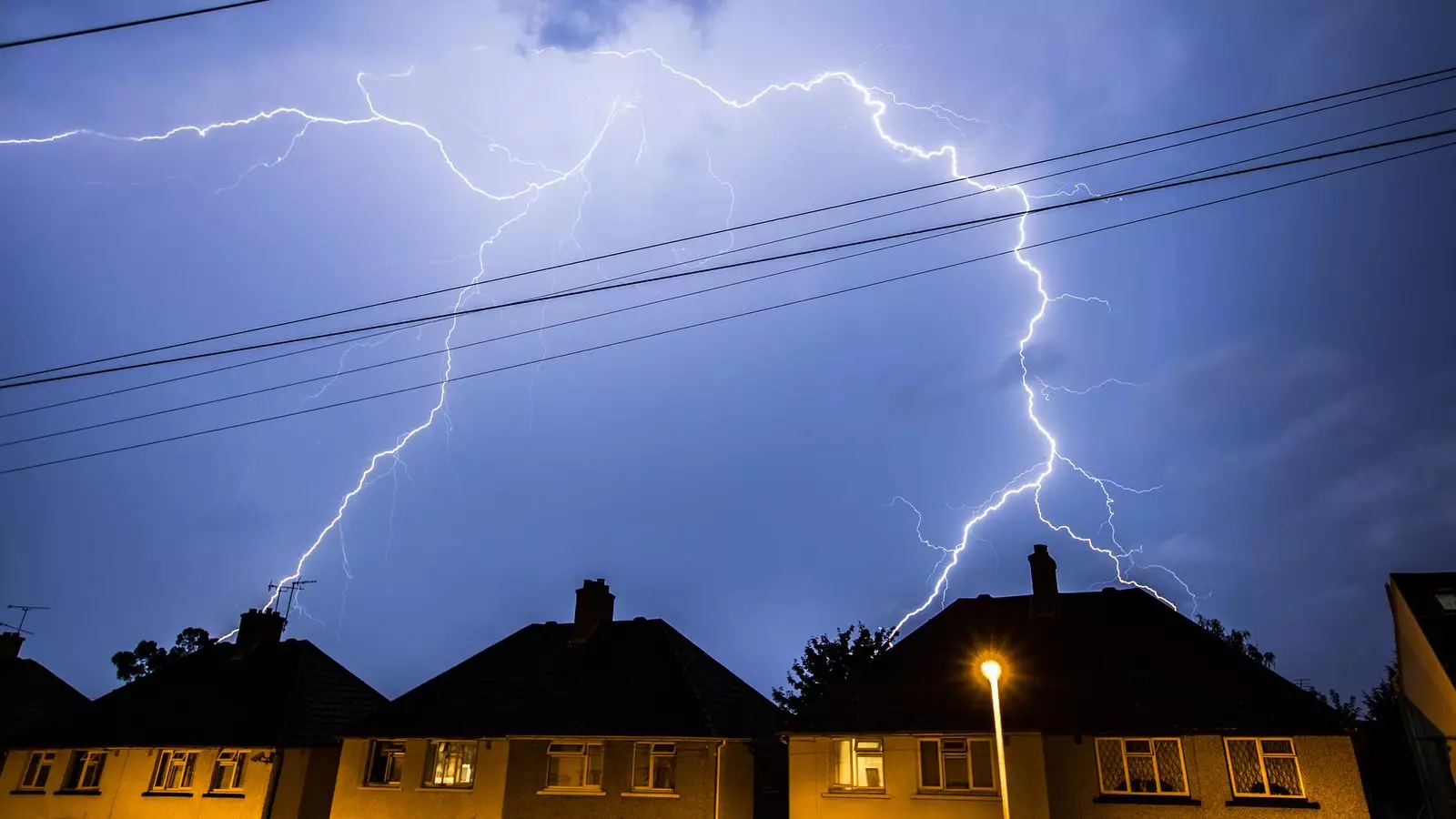In recent days, the weather has once again shattered our illusions of mastery over nature. With a blanket of warnings ranging from amber to yellow, meteorologists paint a picture of impending chaos, revealing the fragility of our infrastructure and societal resilience. The stark reality is that climate systems are rapidly becoming more unpredictable, exposing the hubris of expecting stability in a shifting environment. Our reliance on short-term forecasts, often treated as gospel, underestimates the complexity inherent in weather patterns, leaving communities unprepared for the severity of what’s to come. This not only highlights a gap in our preparedness but calls into question whether our technological advances have genuinely equipped us to face nature’s whims or merely lured us into complacency.
A Society on the Brink of Its Own Making
The immediate impacts of forecasted heavy rain and flash flooding are tangible and devastating—roads, homes, and livelihoods threatened, community cohesion tested. Ironically, these disasters are often exacerbated by human decisions—deficient urban planning, poor drainage systems, and neglected infrastructure—making the crisis as much a product of societal neglect as it is of meteorological forces. We remain woefully ill-equipped for the consequences of our environmental footprint, with rising temperatures and baking ground conditions making flash floods more common and intense. This scenario exposes our collective vulnerability: a society rooted in development that prioritizes short-term economic gains over sustainable resilience. When communities are left stranded or cut off due to floodwaters, it’s not just nature that’s to blame; it’s a failure of foresight and collective responsibility.
The False Promise of Meteorological Certainty
Weather warnings, despite their precision, often fall short in offering clarity—an unsettling paradox. Forecasters caution about the worst-case scenarios, yet public perception remains prone to either panic or complacency. This instability injects an unsettling sense of uncertainty into daily life, eroding trust in our systems of prediction. The meteorological outlook suggests torrential downpours, lightning strikes, and potential power outages—a cocktail that risks turning minor inconveniences into continent-wide disruptions. The gap between warnings issued and real-time experiences underscores an uncomfortable truth: our systems are still playing catch-up, and our preparedness is often reactive rather than proactive. As the forecasts suggest, heavy rains will continue into next week, yet what remains unclear is whether our infrastructure will withstand this onslaught or collapse under pressure. The hope that high pressure may bring temporary respite is hardly comforting when facing the profound unpredictability of nature’s fury.
The Larger Threats Beneath the Surface
The recent drought-scorched landscape complicates the narrative by highlighting the paradox of climate extremes coexisting—droughts and floods, dry spells and storms. The drought conditions, worsened by record-low rainfall and escalating water demands, are a testament to our mismanagement of natural resources. Reservoir levels falling below sustainable thresholds exemplify the disconnect between our consumption patterns and environmental realities. Hosepipe bans and water restrictions reveal the fragility of our supply chains, exposing a failure to balance human needs with ecological boundaries. The ongoing dry start to the year, reminiscent of 1976’s drought, is a stark warning: our current approach to resource management is unsustainable. This duality—drought one day, flood the next—illuminates the profound and dangerous misalignment between climate policies and ecological stewardship. It’s a sobering reminder that ignoring the signs of environmental strain only amplifies the severity of natural disasters when they inevitably strike.
The Long Road Ahead: Uncertainty and Urgency
While meteorologists attempt to decipher and predict the storm’s trajectory, the truth remains that the future is increasingly uncertain. The expectation that high pressure might offer a temporary respite appears more like wishful thinking than a viable strategy. As unsettled weather continues, governments and communities face a pressing need to rethink their approach to climate resilience, investment, and urban planning. Reactive measures—hosepipe bans, emergency evacuations—are necessary but insufficient without long-term strategies aimed at reducing vulnerabilities. The creeping realization is that climate change isn’t an imminent threat distant on the horizon but a present-day reality requiring urgent, sustained action. Our response must evolve from short-term firefighting to systemic change—otherwise, each storm will leave behind a trail of destruction, societal fractures, and a deepening sense of helplessness. The challenge is not just in weathering the storm but in reshaping a society that too often ignores its own ecological limits.


Leave a Reply